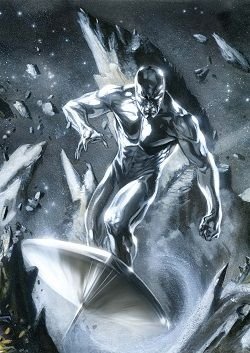- Sep 22, 2013
- 4,956
- 250
- 85
Science-fiction is a genre of speculative fiction, typically dealing with imaginative concepts such as advanced science and technology, spaceflight, time travel, and extra-terrestrial life. Science fiction often explores the potential consequences of scientific and other innovations, and has been called a "literature of ideas" (source of information: Wikipedia).
American comic books are thin periodicals, typically 32-pages, containing comics content. While the form originated in 1933, American comic books first gained popularity after the 1938 publication of Action Comics, which included the debut of the superhero Superman. This was followed by a superhero boom that lasted until the end of World War II. After the war, while superheroes were marginalized, the comic book industry rapidly expanded, and genres such as horror, crime, and romance (and science-fiction!) became popular. The 1950s saw a gradual decline, due to a shift away from print media in the wake of television and the impact of the Comics Code Authority. The late 1950s and the 1960s saw a superhero revival, and superheroes remain the dominant character archetype in the 21st century (source of information: Wikipedia).
Isaac Asimov is arguably the most popular/well-known 'folk science-fiction' pulp-and-novel writer, and Asimov's Science Fiction is an American science-fiction magazine, which publishes science-fiction (and fantasy), named after Asimov.
The modern age appeal of sci-fi tales and movies has been imprinted into American comic books and American comic book characters such as Brainiac (DC Comics), Nuclear Man (DC Comics), and Magneto (Marvel Comics).
In particular, the Symbiote 'alien-mutation substance/intelligence' from Marvel Comics is a symbol of evolution-deviance and adaptation-paranoia and can be useful in discussions about 'folk-philosophy/mythology' about general evolutionary-theory.
When a human merges with the Symbiote, as did fictional convict Cletus Kasady, he/she might become an 'evolutionary-derelict' or primal threat such as Carnage (Marvel Comics).
Folk marketing of these evolution-themed 'paranoia-fables' represents a civilization interest in science-education access, so how can we coordinate mythology with metaphysics?
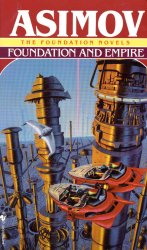
====
The fictional Marvel Comics science-firm Oscorp is a center for various investigations on the mutations in humans giving rise to incredible creatures and industrialization-extracted weaponry and materials. We might compare the folk appeal of Oscorp to the polemics-appeal of Sophists (from Ancient Greece).

A comic book reader might discover that an Oscorp display includes various representations of creatures of hybridized morphology and even synthetics/prosthetics. These 'creatures' represent a folk oral tradition in modern times regarding the 'structure of evolution' (in mass-media and cinema).
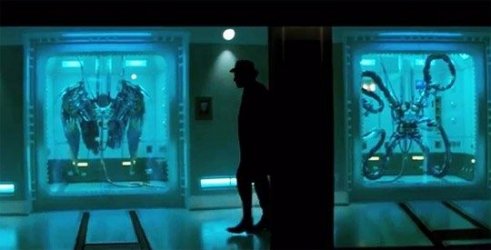
DC Comics' Brainiac is a super-intelligent semi-human who seems dependent on various forms of synthetics and organics for stimulation and sustenance. Brainiac, like the Marvel Comics' Symbiote-creatures, symbolizes a Sophism-oriented folk-meditation on the parameters of evolutionary deviance (and enhancement).
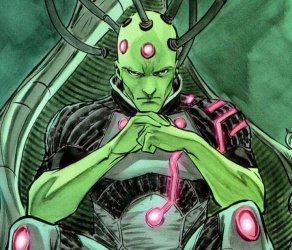
There are various 'strains' of Symbiotes and hence Symbiote-offspring/creatures. There are even hybrids (e.g., Carnage-Venom Hybrid). These Symbiote substances alter the brain's sense of prioritization and hence adaptation schemes, making the bodies of the hosts sensitive to different things. The human hosts nearly-completely forget their former identities/imaginations.

All the Symbiotes in Marvel Comics storyboards symbolize evolutionary monstrosities and the general fear of evolution-gone-bad when hybridization takes the form of parasitism or even cannibalism. The human hosts of the Symbiote-substances have no memory of the sanity of their previous personalities and hence mental prioritization logic!
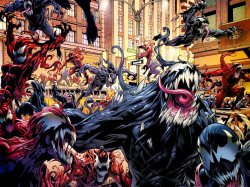
We might even consider how this alteration in prioritization-schemes in the Symbiote human host's natural brain affects and reorients the human's anticipation/adaptation flexibility and hence memory systems. After all, the human brain affected by the Symbiote is now retrieving different stored memories and at different rates (for different adaptation schemes in response to Symbiote-altered sensitivities). Therefore, we might evaluate how Symbiote comic book sci-fi/horror storytelling offers us psychologically intriguing ideas about the 'shape' of Alzheimer's disease (neurodegenerative disorder leading to memory-loss and self-care interests).

An American sci-fi/horror comic book writer might create a storyboard about the Symbiote Carnage merging with the Red Xenomorph (fictional red-variant predatory intelligent alien creature from Alien sci-fi-horror films/comics/novels) and becoming both a planetary-colonialist/invader and a predator/terrorist. Such an 'evolution hybridization sci-fi paranoia-tale' would symbolize our modernism angst regarding adaptation-research (e.g., Human Genome Project).
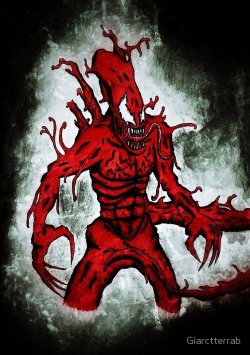
We might compose a hypothetical dialogue/discussion between Isaac Asimov and Marvel Comics comic book writer Stan Lee about Symbiote-mythology and its relevance to modernism philosophy!
ASIMOV: The Ancient Greeks believed in harmonies.
LEE: Evolution-paranoia inspires tales about 'deviance-monsters.'
ASIMOV: The Symbiote (e.g., Carnage) symbolizes undesirable mutation!
LEE: Yes, Carnage (for example) represents fears about biological anarchy.
ASIMOV: Would you want to mutate simply because you'd become stronger?
LEE: Right, you might become insane or cruel...of course, athletes take steroids!
ASIMOV: Yes, steroids enhance muscles and stamina and might even trigger the brain.
LEE: Sure; reflexes become sharper, and the brain senses the body is more 'flexible.'
ASIMOV: The Symbiote is therefore a folk-avatar signifying modernism paranoia...
LEE: It's not simple to be confident about the Human Genome Project.
ASIMOV: Genetics-abnormalities and evil robots comprise the brunt of science-paranoia.
LEE: We care about the 'quality of changes' in the body and brain...
ASIMOV: Perhaps Symbiote Carnage can teach us about 'brain juice.'
LEE: Perhaps 'folk sci-fi' has become the domain of 'new age Darwinian poetics'!
====


American comic books are thin periodicals, typically 32-pages, containing comics content. While the form originated in 1933, American comic books first gained popularity after the 1938 publication of Action Comics, which included the debut of the superhero Superman. This was followed by a superhero boom that lasted until the end of World War II. After the war, while superheroes were marginalized, the comic book industry rapidly expanded, and genres such as horror, crime, and romance (and science-fiction!) became popular. The 1950s saw a gradual decline, due to a shift away from print media in the wake of television and the impact of the Comics Code Authority. The late 1950s and the 1960s saw a superhero revival, and superheroes remain the dominant character archetype in the 21st century (source of information: Wikipedia).
Isaac Asimov is arguably the most popular/well-known 'folk science-fiction' pulp-and-novel writer, and Asimov's Science Fiction is an American science-fiction magazine, which publishes science-fiction (and fantasy), named after Asimov.
The modern age appeal of sci-fi tales and movies has been imprinted into American comic books and American comic book characters such as Brainiac (DC Comics), Nuclear Man (DC Comics), and Magneto (Marvel Comics).
In particular, the Symbiote 'alien-mutation substance/intelligence' from Marvel Comics is a symbol of evolution-deviance and adaptation-paranoia and can be useful in discussions about 'folk-philosophy/mythology' about general evolutionary-theory.
When a human merges with the Symbiote, as did fictional convict Cletus Kasady, he/she might become an 'evolutionary-derelict' or primal threat such as Carnage (Marvel Comics).
Folk marketing of these evolution-themed 'paranoia-fables' represents a civilization interest in science-education access, so how can we coordinate mythology with metaphysics?

====
The fictional Marvel Comics science-firm Oscorp is a center for various investigations on the mutations in humans giving rise to incredible creatures and industrialization-extracted weaponry and materials. We might compare the folk appeal of Oscorp to the polemics-appeal of Sophists (from Ancient Greece).

A comic book reader might discover that an Oscorp display includes various representations of creatures of hybridized morphology and even synthetics/prosthetics. These 'creatures' represent a folk oral tradition in modern times regarding the 'structure of evolution' (in mass-media and cinema).

DC Comics' Brainiac is a super-intelligent semi-human who seems dependent on various forms of synthetics and organics for stimulation and sustenance. Brainiac, like the Marvel Comics' Symbiote-creatures, symbolizes a Sophism-oriented folk-meditation on the parameters of evolutionary deviance (and enhancement).

There are various 'strains' of Symbiotes and hence Symbiote-offspring/creatures. There are even hybrids (e.g., Carnage-Venom Hybrid). These Symbiote substances alter the brain's sense of prioritization and hence adaptation schemes, making the bodies of the hosts sensitive to different things. The human hosts nearly-completely forget their former identities/imaginations.
All the Symbiotes in Marvel Comics storyboards symbolize evolutionary monstrosities and the general fear of evolution-gone-bad when hybridization takes the form of parasitism or even cannibalism. The human hosts of the Symbiote-substances have no memory of the sanity of their previous personalities and hence mental prioritization logic!

We might even consider how this alteration in prioritization-schemes in the Symbiote human host's natural brain affects and reorients the human's anticipation/adaptation flexibility and hence memory systems. After all, the human brain affected by the Symbiote is now retrieving different stored memories and at different rates (for different adaptation schemes in response to Symbiote-altered sensitivities). Therefore, we might evaluate how Symbiote comic book sci-fi/horror storytelling offers us psychologically intriguing ideas about the 'shape' of Alzheimer's disease (neurodegenerative disorder leading to memory-loss and self-care interests).
An American sci-fi/horror comic book writer might create a storyboard about the Symbiote Carnage merging with the Red Xenomorph (fictional red-variant predatory intelligent alien creature from Alien sci-fi-horror films/comics/novels) and becoming both a planetary-colonialist/invader and a predator/terrorist. Such an 'evolution hybridization sci-fi paranoia-tale' would symbolize our modernism angst regarding adaptation-research (e.g., Human Genome Project).

We might compose a hypothetical dialogue/discussion between Isaac Asimov and Marvel Comics comic book writer Stan Lee about Symbiote-mythology and its relevance to modernism philosophy!
ASIMOV: The Ancient Greeks believed in harmonies.
LEE: Evolution-paranoia inspires tales about 'deviance-monsters.'
ASIMOV: The Symbiote (e.g., Carnage) symbolizes undesirable mutation!
LEE: Yes, Carnage (for example) represents fears about biological anarchy.
ASIMOV: Would you want to mutate simply because you'd become stronger?
LEE: Right, you might become insane or cruel...of course, athletes take steroids!
ASIMOV: Yes, steroids enhance muscles and stamina and might even trigger the brain.
LEE: Sure; reflexes become sharper, and the brain senses the body is more 'flexible.'
ASIMOV: The Symbiote is therefore a folk-avatar signifying modernism paranoia...
LEE: It's not simple to be confident about the Human Genome Project.
ASIMOV: Genetics-abnormalities and evil robots comprise the brunt of science-paranoia.
LEE: We care about the 'quality of changes' in the body and brain...
ASIMOV: Perhaps Symbiote Carnage can teach us about 'brain juice.'
LEE: Perhaps 'folk sci-fi' has become the domain of 'new age Darwinian poetics'!
====






